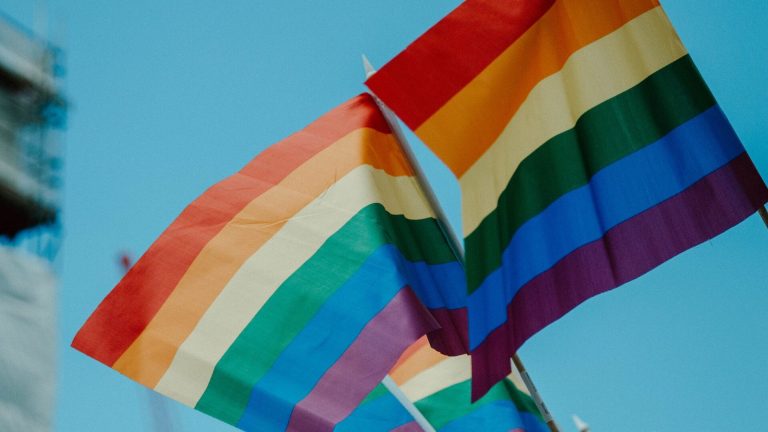How do nations become post-Christian? To quote Ernest Hemingway: Little by little, then suddenly.
For decades, the United States was a bastion of religiosity, bucking the trend toward secularization, but in recent years the needle has begun to move. According to to a 2019 survey, between 20% and 25% of American adults now identify as “nones” (meaning they do not identify with any religion), a higher percentage among younger adults than among older adults and probably indicative of a long-term trend. According to a Politico/Morning Consult 2020 survey49% of voting-age Gen Z respondents (those born after 1996) identified as agnostic or atheist – a sea change in religious identification.
To analyze these numbers a little further, consider that a 2017 survey found that only 11 percent of Americans claimed to have read the entire Bible, meaning 89 percent have not. It’s no surprise, then, that even Americans who still identify as Christians are abandoning any semblance of orthodoxy: 40 percent of American Christians say the Bible is “ambiguous” on abortion, 34 percent reject the biblical definition of marriage and 34% reject the biblical definition of marriage. % affirming that abortion is morally acceptable.
There are many reasons for the “rise of nonsense”, but one is that many who had simply identified as Christian as a nod to their heritage or culture without actually believe in any of its principles now abandon this label because it becomes socially embarrassing. Until recently, identifying as some sort of Christian was a net positive; that’s why elites like Barack Obama did it. But as it becomes negative, many turn to the new cultural elites. This is particularly true of young Americans, who have come of age cut off from their civilizational heritage and distorted by the public education system.
For example, about a quarter of Generation Z identify as gay, lesbian, bisexual, transgender or “Genderqueer” – whereas just a few years ago, less than 3% of the population identified as being on the LGBT spectrum. Policy reported in 2020 that “a third of Gen Zers say they know someone who uses gender-neutral pronouns to refer to themselves and nearly 6 in 10 say online forms or profiles should offer “more options than ‘man’ or ‘woman'” and that as a result, “religious freedom, particularly as it relates to discrimination against LGBTQ people…is not resonating with young Americans.” »
In short, the new generation of Americans increasingly views religious freedom as overt bigotry. Identification with the LGBT movement is growing astronomically; identification with Christianity is in free fall.
Indeed, dozens of new sexual and gender identities have recently been invented, allowing heterosexuals to also claim LGBT status. In 2023, 38% of Brown University’s student population identified as LGBT – many identifying simply as “other” – compared to 14% ten years earlier. However, an overwhelming majority of those who identify as nominally non-heterosexual are in practice only interested in relationships with the opposite sex. As gay rights activist Andrew Sullivan has observed, most of those who claim to be bisexual are in fact only in relationships with the opposite sex. They had adopted the label, not the lifestyle.
The reality is that people claim to be LGBT because it is fashionable and popular to do so. Indeed, Dr Eric Kaufmann of the University of London noted that although LGBT activists like to claim that a more tolerant culture has allowed more people to come out of the closet, the data tells a different story. The Center for the Study of Partisanship and Ideology has been tracking data that confirms what Sullivan noted: LGBT identification has increased sharply, while homosexual activity has not.
“If it was about people feeling like they could come out, then we should have seen these two trends growing together,” Kaufmann told a media. “What we find instead is that identity increases much faster than behavior, indicating that people with casual rather than sustained feelings of attraction toward the opposite sex are increasingly identifying as LGBT.” What’s even more likely is that vague terms like “queer” allow heterosexual children to gain the status and privileges that now come with identifying as LGBT without actually engaging in homosexual behavior.
Exhibit A is Michaela Kennedy-Cuomo, daughter of former New York Governor Andrew Cuomo. In 2021, she came out as “queer”; less than a month later, she announced that she was “demisexual,” which is defined as — I’m not making this up — “a sexual orientation in which a person feels sexually attracted to someone only after developed a close emotional relationship. create connections with them. » In an Instagram Live, Kennedy-Cuomo described her journey: “When I was in middle school, I came out as bisexual to my family and close friends. When I was in high school, I learned about pansexuality and thought, “That’s my flag.” And I’ve recently learned more about demisexuality and I think that’s the identity that resonates with me the most.
The older generation of Kennedy-Cuomos were culturally Catholic. The younger generation is choosing to be culturally queer – and for the same reasons.
Some have argued that the growing rate of young people identifying as LGBT indicates social contagion. There is truth in this analysis. But these statistics also indicate the magnitude of the LGBT movement’s near-total victory, not only in mainstreaming its ideology, but also in achieving cultural dominance in key institutions. A crucial sign of this dominance is the fact that so many young people desperately want to identify with their movement.
Cultural Christians are rapidly disappearing. Cultural homosexuals are replacing them.


